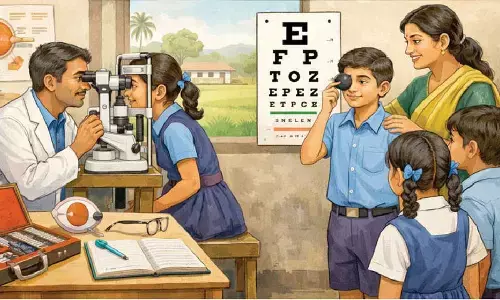Early STEM training can help build the global citizens of tomorrow

Early STEM training can help build the global citizens of tomorrow
A STEM education can also prepare students to create new computer applications and improve computer systems. It may also be used to create games and gaming software.
The acronym STEM stands for Science, Technology, Engineering, and Mathematics, but there's more to it than just that. Over the years, STEM education has evolved into a distinct approach to teaching and learning, one that is centred on developing 21st century skills such as digital literacy, computational skills, hands-on ability, communication, and collaboration. As a result, STEM education has something to offer to each and every student.
In the current era of technological revolution, innovation has become a regular part of human existence and it is not uncommon to receive news of various breakthrough technological developments across industries. Unlike conventional education experiences, which focus on individual topic areas, a STEM education places an emphasis on technology and combines courses in ways that link and relate disciplines.
A STEM education encourages students to explore, make errors, and learn from their own experiences in order to get the best results possible, rather than depending just on what the textbook says. It is built on critical thinking, logical analysis, inquiry, and project-based learning.
How is STEM education different from traditional learning?
The pedagogical system in a STEM paradigm differs from the conventional education system in some fundamental ways. Conventional education places an undue emphasis on the memorization of data, as a result of which critical enquiry and analysis come to be seen as unimportant or even distracting. Traditional education relies on a top-down didactic classroom instruction based on information sharing by the teachers and textbooks. The learning outcomes are measured in terms of marks obtained by undiscerning reproduction of that information.
STEM-based pedagogy, on the other hand, values enquiry, self-directed research, original thinking, and deliberation of concepts. Information is gathered through multiple sources and concepts are experimented with. Children are encouraged to analyse information, assess, and apply it in real-life situations. Assessment in STEM-based are holistic and learning outcomes are measured in terms of internalization of concepts and the ability to extend and apply them.
Early development of STEM competencies enhances a child's readiness for rapidly evolving workspaces. STEM Jobs are the key to our economy's future- STEM jobs are expected to rise by 8.8% by 2028, with healthcare jobs, which typically require a strong STEM background, expected to grow even faster. Additionally, STEM teaches innovation and critical thinking.
The focus on logical thinking and problem-solving procedures helps students to build mental habits that help them excel in many fields. It also enhances the ability to solve problems - a STEM education substantially aids students in developing analytical skills. This enables them to solve a wide range of difficulties, not just in the workplace but also in everyday life. It promotes Knowledge Application- In STEM education students get the opportunity to apply the knowledge practically. This will motivate the students to acquire more skills. It also promotes the use of tech- STEM education teaches children about the practicality of technology and innovation. As a result, rather than being cautious or afraid of new technology, students will be prepared to embrace them. As the globe is becoming more tech-centric, this will offer them an advantage in the global environment.
Career opportunities from STEM
Graduates include science instructors, math professors, researchers, and secondary school teachers, science researchers and experts in cutting-edge technology, chemical to civil engineering, doctors, nurses, medical technicians, and other allied medical professionals, software developers and programmers. A STEM education can also prepare students to create new computer applications and improve computer systems. It may also be used to create games and gaming software.
(The author is Founder, Deeksha)

















